Required:
Geodesics
A geodesic is a straight line that is located on a curved surface.
Imagine 2 people on earth start walking north to the pole.
They start walking exactly parallel to each other at the equator.

As they get closer to their destination, they will start to get closer together, even though both of them started walking in a straight line in the same direction.
If they didn’t know the earth was a sphere, It would appear as though some unknown force was pulling them together.
Of course, there is no force.
The surface they are walking on is curved.
Curved Spacetime
Einstein looked at the planets orbiting or a ball falling to the ground and noticed that exactly the same was occurring. Gravity wasn’t pulling the objects. Everything is moving in a straight line. It is just that the fabric of spacetime in which they move is curved.
Let’s try and visualize this.
Lets imagine a ball that is motionless in space. We will reduce the 3 dimensions of space down to 2D for these diagrams.
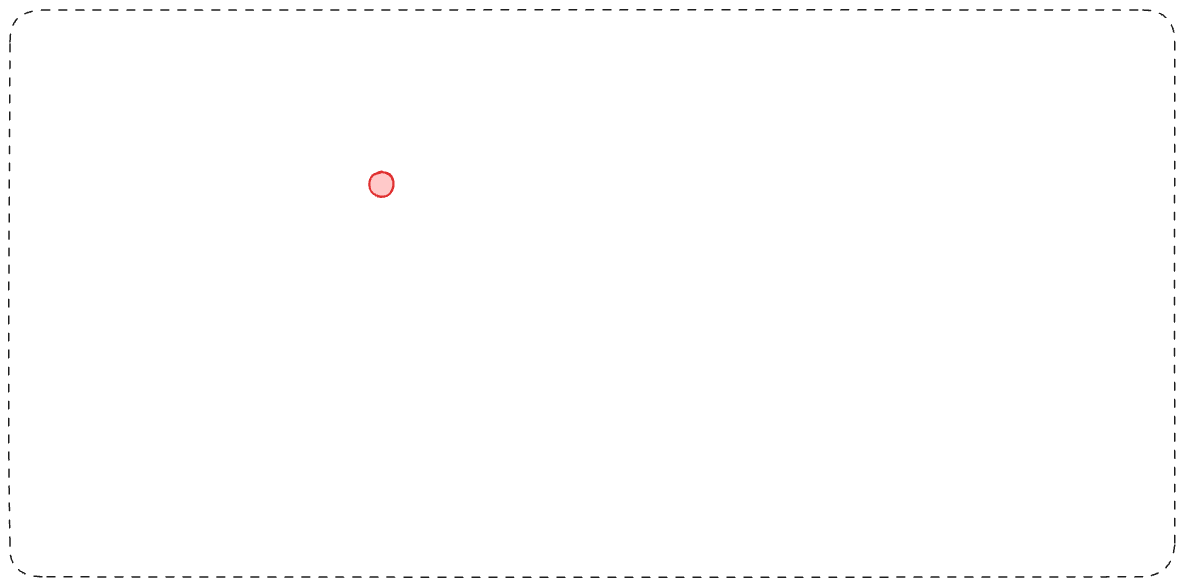
Due to the Principle of Inertia, the ball will not move unless acted on by an outside force.
But this picture is not complete.
Our universe isn’t just 3 dimensions it is 4 dimensional spacetime, with 3 dimensions of space and 1 dimension of time.
Temporal Velocity
Unless time has stopped, the ball is moving through the time dimension, even if it is motionless in space.
This movement through time is called temporal velocity (vt).
Let’s alter our diagram to show the ball’s temporal velocity. We are again drawing in 2D space, so this can be thought of as 2 + 1 spacetime. Lets also add the grid of spacetime so we can visualize it. The y axis is space and the x axis is time

If you can’t imagine what the spacetime grid is representing. Think of the space axis as a page in a flip book, a 2D plane where the ball exists. The time axis is the multiple pages you can flip through.
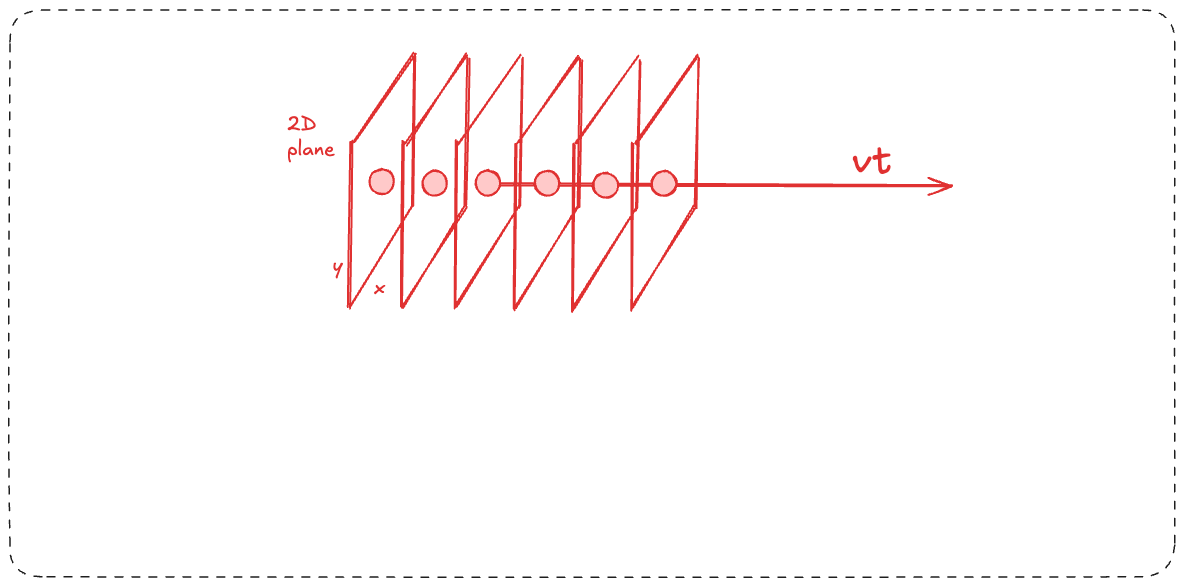
The grid has 3 dimensions. One of the dimensions of space is pointing directly at you out of your monitor. This is important to understand, as we will be switching the perspective around later.
The important thing to note here is that objects that appear to be stationary in space still possess a velocity through time.
Mass & Curvature
Now let’s add a massive object to our scene - the earth, as the ground.
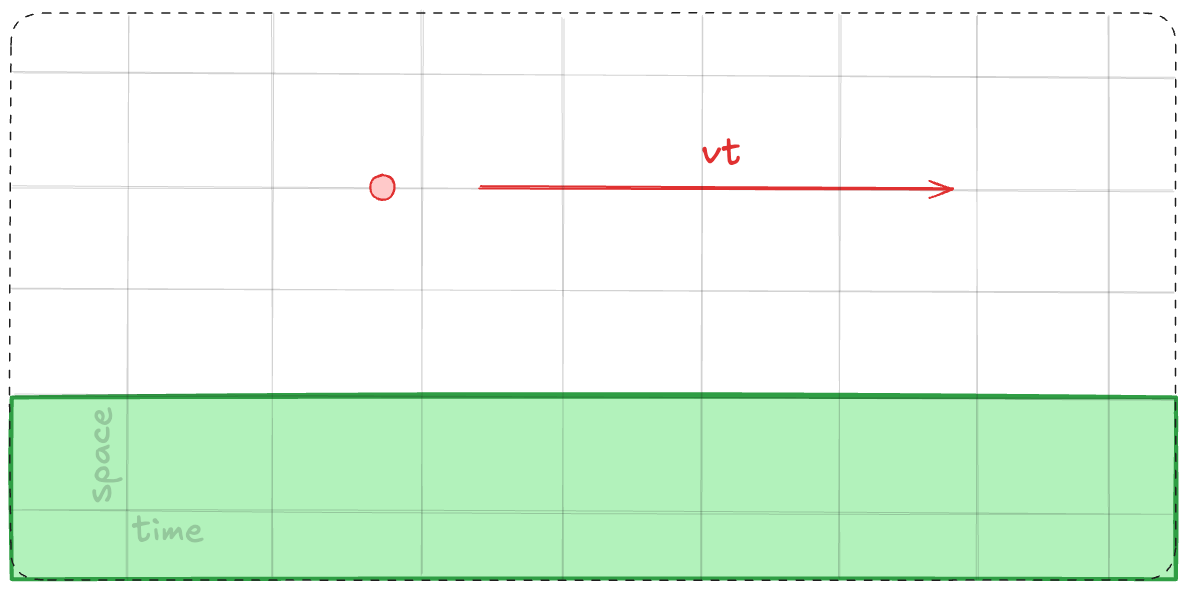
The effects of massive objects on spacetime is that they curve spacetime towards it. It bends the underlying grid.
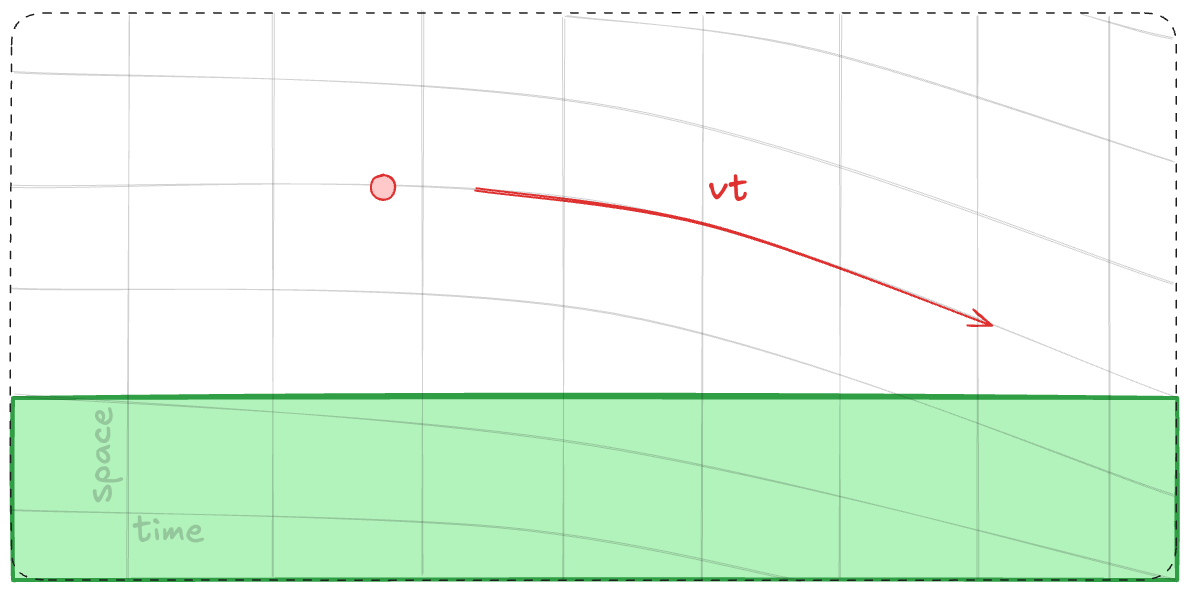
The ball is now traveling on a geodesic like the example above. While it is still flying perfectly straight, the underlying grid is now curved.
Just like the two people walking to the north pole felt like they were being pulled together, the ball now appears to have an unseen attractive force towards the earth.
Let’s redraw the diagram above and rotate our perspective by 90 degrees so the curved time dimension will now be the one pointing out of your monitor. If you can’t imagine time, just imagine the ball being thrown towards you.
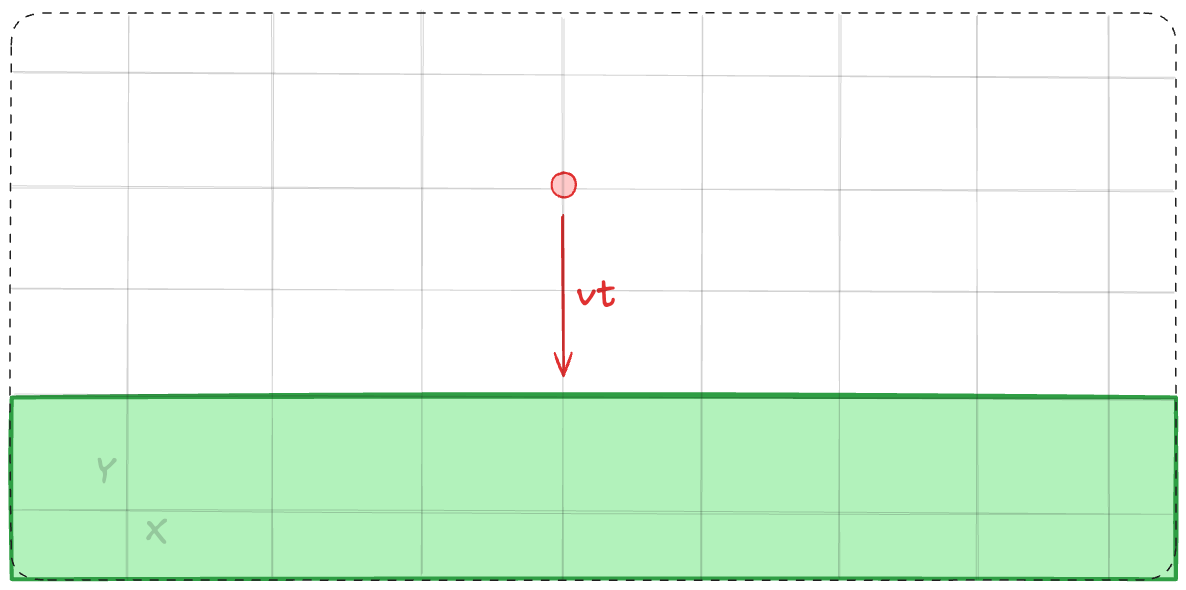
You might think that this just looks like a ball falling, and that’s because it is.
This is the view we see everyday.
Because the ball has a temporal velocity along a curved dimension of spacetime, it moves along a geodesic towards the massive object that has curved spacetime towards it.
We can see that gravity is not a force but a curvature of spacetime.
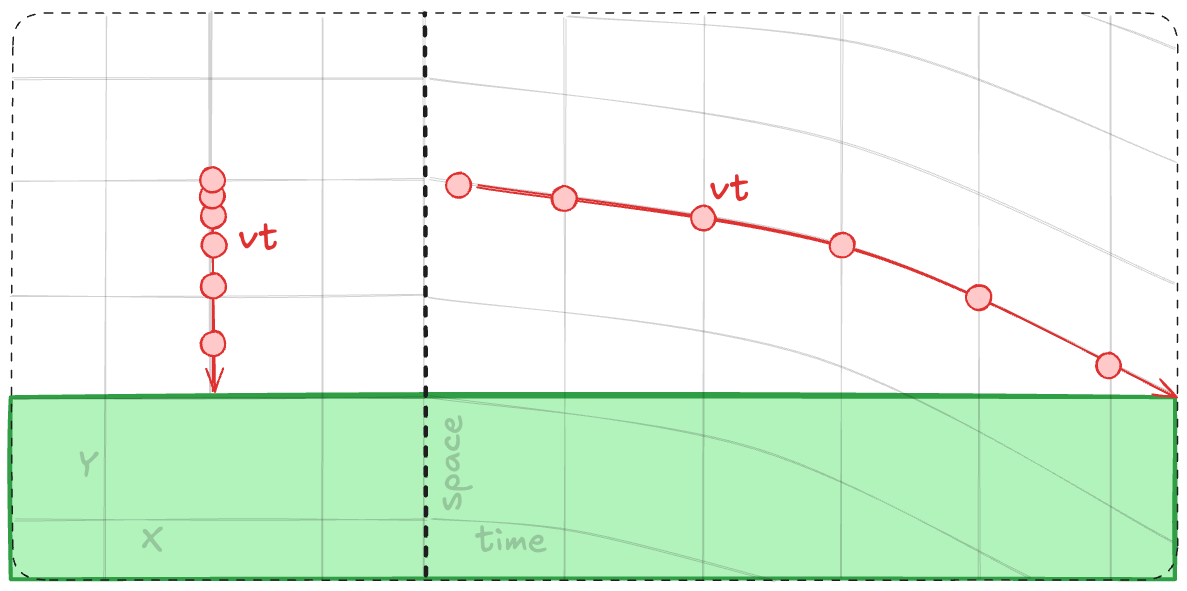
When we plot the path of the ball at equal spacings in time, we can also see how this curvature leads to an acceleration of the ball.
Time and space
Some of you might be wondering how a velocity in time relates to a motion in space.
Think about it like this, when the ball’s temporal velocity is curved to intersect with the ground, it means the ball’s future is the ground. It’s destiny is now to move to the ground.
It’s actual future is to continue to the center of the earth, however the ground exerts a force on the object to prevent it from doing so.
This is why you can always feel the ground pushing you up. You are constantly being accelerated into it by your curving temporal velocity.
It’s also important to remember that time isn’t separate from space, it is just another dimension of the same thing called spacetime.
To be continued
There’s way more to General Relativity, but I ran out of time and will finish it later.